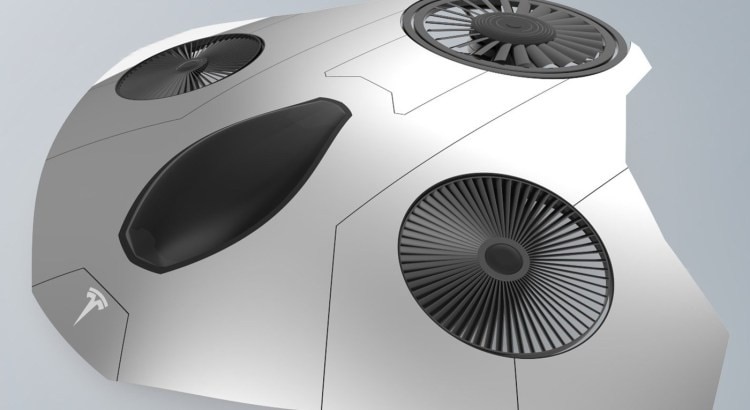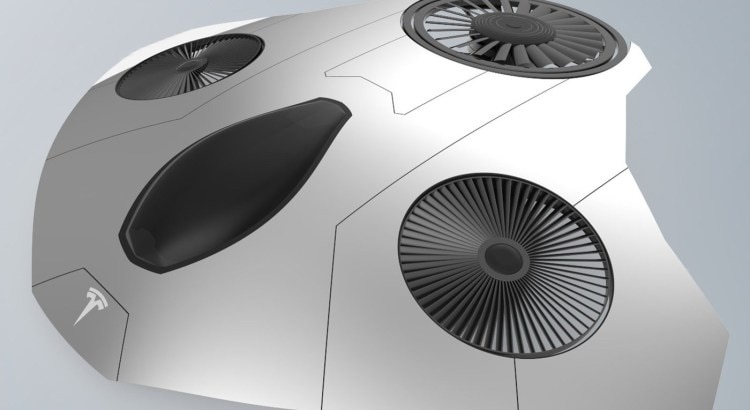Will Tesla ever make a flying car? The fact that Elon Musk would like to is an open secret, and we’re quite positive that someone, inside Tesla, is already working on such a project. While we keep on waiting for it, Tesla’s CEO took it to Twitter to praise the concept of a hypothetical Tesla Model V by the British industrial designer Tom Abbot-Davies. The EVTOL (Electric Vertical Take Off and Landing) vehicle, which Abbot-Davies started to conceptualize while he was still a student, in 2014, took inspiration from a Manta Ray. It’s a one-passenger vehicle with three battery powered engines, a 1,250-kilowatt rear motor plus a dual 650-kilowatt brushless engine, and a fuselage made of magnesium with a titanium shell.
The Model V is of course just a concept and it will never see the light of the day. At least not until lithium-ion batteries will reach the energy density needed to propel a flying vehicle. Despite the first attempt at electric airplanes, a flying car with VTOL would be different. According to Mr. Musk itself, batteries suitable for commercial flight would have to pack a density of at least 400-500 Watt-hours per Kg, while right now the best batteries can achieve a density of 250 Watt-hours per Kg. We’ll get there, eventually, but electric flying doesn’t seem to be a top priority for the electric mobility sector. Which doesn’t mean that cool projects and concepts like Abbot-Davies’ shouldn’t keep envisioning a future of buzzing, drone-like sustainable flying cars.







